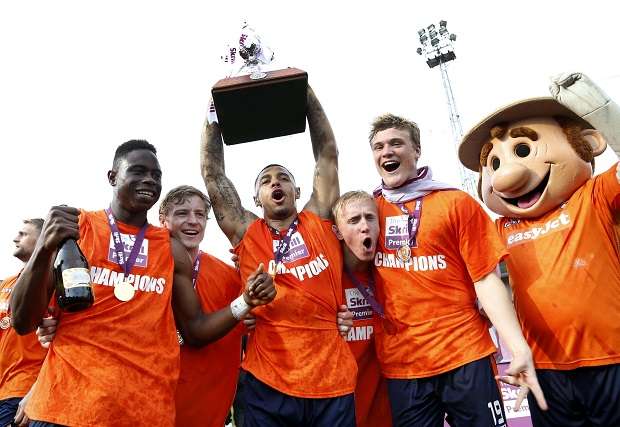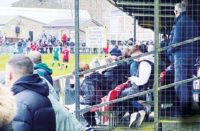TIM SHERWOOD had a moan about the high price of five English players he enquired about signing for Aston Villa forcing him to abandon the plan and look abroad.
On Sunday, in The NLP's sister title The Football League Paper, Hull City boss Steve Bruce explains how he tried to sign Andre Gray from Brentford before the former England C hitman joined Burnley for a fee rising to £9m last week.
“Unfortunately, the reason so many of us buy foreign is because they're cheaper,” says Bruce. “Every manager knows that if he enters talks about an English player, the selling club will add noughts. And nobody can adequately explain why.”
Read on Steve, and I'll explain why I have no problem with the sky-high cost of young English players because it keeps the money in our game.
The extra “noughts”, as Bruce puts it, help keep fellow English clubs in business and give them the chance to flourish.
Gray might have come through the ranks at Shrewsbury Town, but it was a spell of just over four years playing in Non-League that made him the player he is today.
Dean Thomas initially took him on loan to Hinckley United towards the end of 2009-10, then signed the teenager permanently when he was freed that summer.
He had troubles, not least when he was stabbed outside a nightclub in December 2011. He bears the scar on the side of his face like defenders wore the scorch marks on their shorts of lunging across the turf as they tried, usually in vain, to keep up with his blistering pace.
Gray's 37 goals in 80 Step 2 appearances led to Luton spending £30,000 on the then 21-year-old in March 2012 – money that helped pay the now-defunct Knitters' debts.
Recruitment
I was at Kenilworth Road for Gray's Conference debut against Grimsby two days after his move, and thankfully his initial impression – certainly the one he made on former England striker Brian Stein sitting alongside me in the Press box – did not last.

Every ball that went up to him bounced off or went over his foot, every shot he attempted flew high or wide, as the heavy-legged youngster seemed overawed.
Then, in the second half, a corner came in from the right and Gray's afternoon turned on its head as he directed an overhead kick into the top corner.
I had to nudge Stein – who spends the 90 minutes on the phone to the Press Association giving them a running commentary – to tell him the player he'd doubted for an hour had gone and produced a spectacular goal. A pillar in the main stand had obscured his view!
Of course, many more would follow as Gray made his name in the Hatters' 2013-14 title-winning campaign, earning the Conference Golden Boot for the 30 goals that season in his total of 47 in 88 Luton appearances.
Luton may now be a League Two club, but we have Hatters managing director Gary Sweet to thank for sharing details of the Burnley deal this week.
As part of the all-important sell-on clause they inserted in their sale to Brentford, the Hatters will receive “a shade over £1.1m spread over three seasons”, with “up to £700,000 more” should Burnley be promoted.
“We would also like to personally thank those people who played their part in the scouting and recruitment process of Andre, as well as those who have helped develop him into the player he is now,” added Sweet.
Former Hatters boss Gary Brabin and coach Paul Carden were two people Sweet is referring to. Both are now managing in the Conference at Tranmere and Southport and deserve their name in lights, along with ex-Hinckley boss Dean Thomas, for recognising Gray's talents and taking a punt.
The reason Brentford wanted more money is because they had to pay the sell-on to the smaller club who helped develop Gray into a multi-million pound striker, in the same way that Raheem Sterling fetched £49m because QPR needed their share.
It's not a new phenomenon – Hayes benefited from Les Ferdinand's sale from QPR to Newcastle in 1995 to the tune of £600,000, FC Halifax got a six-figure sum from Jamie Vardy's £1m move from Fleetwood to Leicester – and Sherwood and Bruce should appreciate why the fees for English players developed by English clubs are so high.
They help keep the biggest Pyramid in world football strong; help maintain youth systems and infrastructures for clubs who get little help so the next generation of Grays and Vardys can be found.
So if some small change from the billion-pound TV deals that Burnley and Bruce's Hull still benefit from, remember, can find its way down, I'm all for talking telephone numbers when it comes to the flogging of young English talent.


















